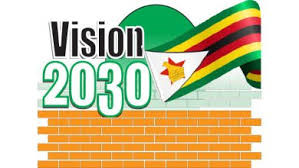
BANKERS and financial institutions across the world are succeeding in turning “financial inclusion” and “financial literacy” into buzzwords. However, what is not emphasised enough is the fact that finance is just a catalyst because money is not a stand-alone ingredient.
In fact, it is business literacy that gives more meaning to finance or money. In the rush to promote financial inclusion, financial institutions forget that a strong value proposition is not just about offering a menu of financial services but understanding what potential clients really care about.
In agriculture-driven economies, farmers and traders do not aspire to be financial gurus. The core business of farmers is farming and the core business of traders is trading. That is why farmers and traders aspire to stay informed about the market which is the main business ecosystem aligned with their purposes.
They are always keen to know changes in market prices every day if not every hour. It is also in their best interest to know volumes and sources of diverse commodities which compete with what they produce. Without that knowledge, financial literacy is meaningless.
An ecosystem with many moving parts
Like any business, agriculture and food systems have many moving parts that have to come together in an orchestrated way, not just finance. Such parts include diverse customers, competitors, packaging, transport, input providers, local authorities who provide trading space and policy environment including by-laws.
All these influence profitability and survival. Bringing everything together in the right way is much harder than outsiders like financial people imagine. Rather than focusing on a menu of financial services, it is critical for financial institutions to adjust their perspectives and menus in line with all pieces that are an integral part of business literacy.
Financiers may not be aware that most farmers lack capacity to take commodities to the market due to various reasons, including distance, few quantities, lack of awareness of standards, absence of transport and lack of farmer organisation.
- Business opinion: Branding in the age of entrepreneurship and industrialisation (Part 12)
- Business opinion: Branding in the age of entrepreneurship and industrialisation (Part 12)
- Ceteris Paribus: African venture capital funding up 133% HY 22
- Banks battle NPLs surge
Keep Reading
When such farmers see traders or middlemen coming to buy their commodities, they are very grateful to the extent of not minding the prices offered because a buyer who shows up is better than losing all the commodities due to the absence of a market.
Case for differentiated products, services
While digital technology has been touted as an enabler in assisting financial institutions to re-invent their value proposition, it should also be about understanding people and their aspirations. In much of Africa, digital finance has offered one-size-fits-all services, not differentiated by age, gender, social class, disability or type of business.
For instance, mobile money charges the same fees whether a farmer is disabled, a widow or a Cabinet minister. In agriculture-driven economies, one would also expect financial services to be disaggregated by commodity and distance to the market.
Farmers specialising in value chains that drive the economy faster should be given services that recognise their level of contribution to the economy.
Those importing commodities from outside should be charged high fees as part of discouraging them from destroying local jobs through importing and creating jobs in countries from which they are importing.
Better understanding of users as individuals and as groups of value chains rather than a one-size-fits-all approach is only possible when financial institutions invest in collecting nuanced data from the entire ecosystem.
As part of business literacy, financial institutions can push boundaries of what they offer, including granular understanding of the entire business landscape, as well as actors and their income levels.
Using terminologies relevant to context
Financial institutions have been in the forefront of stigmatising business ecosystems that they do not understand. For instance, terms like “informal economy” and “black market” have been coined by economists and financial people after failing to understand the burgeoning indigenous African commerce in which the majority participate.
Something referred to as informal is considered illegal yet that is not the case. When formal financial systems deal in foreign currency, it is called a financial auction system but when ordinary people do it, it is called a black market.
Using such terminologies that denigrate economies in which the majority of people eke out a living demonstrates unwillingness by policymakers to understand the contribution of this economy to development.
One-size-fits-all approaches like formalisation often fail because there is no full understanding of how the so-called informal economy is organised. The fact that the informal economy continues to grow in every African country is an indication that it is adding value.
Otherwise, it would have collapsed many years ago. With proper understanding, humility and relationship building, financial institutions and policymakers can motivate the informal sector like African mass food markets to generate public good solutions related to food safety and nutrition diversity.
Instead of demonising the informal economy, policymakers, financial institutions and researchers can benefit a lot from investing in this vibrant socio-economic ecosystem.
Extractive models, commodities without markets
Instead of developing creative ways of motivating farmers, traders, transporters, vendors and other actors in African mass food markets to evolve towards bringing positive transformation, it seems most African local authorities are not really interested in informal actors paying tax but prefer extractive models like ad hoc ambushing of traders and demand rent or protection fees that are not recorded or properly receipted.
That is what happens when citizens have lost confidence in government revenue collection systems. Instead of putting a car park where customers who come to buy commodities at the market can park their vehicles for a known fee, local authorities prefer opportunistic extraction of fees through punitive measures like clamping vehicles while vehicle owners are buying commodities in the market.
On the other hand, when informal economy actors do not get direct benefits from paying tax or rent to local authorities, they end up succumbing to extractive models and the problem goes on until policymakers decide to stop the corruption.
Unless financial institutions take time to understand these issues, they will continue to see the “informal” economy as high risk yet such an ecosystem has its own unique financial models.
Financial inclusion should not just be about including people but including commodities that have remained marginalised.
For instance, if financing continues to be directed at commodities with a formal market, the majority of people who deal with diverse indigenous commodities that do not have formal markets will continue to be financially excluded.
In most African countries, commodities without a formal market include small grains, indigenous poultry, wild fruits, indigenous mushroom, goats, sheep, citrus fruits like mango and lemon.
While all these commodities sustain many poor people, government policy planning does not often mention markets for mango, lemon, pineapples and other commodities. It is all about maize, wheat and beef and non-food commodities like tobacco.
If a processing plant can be set up for marula in Mwenezi, why is it not possible to set up a processing plant for pineapples and other fruits in Chipinge and other areas where fruits grow naturally in abundance?
In most cases, government does not think in terms of alternative markets, but expects every farmer to sell commodities through mandated markets like the Grain Marketing Board.
However, it is now common knowledge that commandeered markets do not cater for all commodities that sustain most people.
That is why mapping supply corridors becomes fundamental because it reveals the extent to which each commodity and market needs its own drivers and how far it creates business opportunities.
- Charles Dhewa is a proactive knowledge broker and management specialist. He writes here in his personal capacity.











